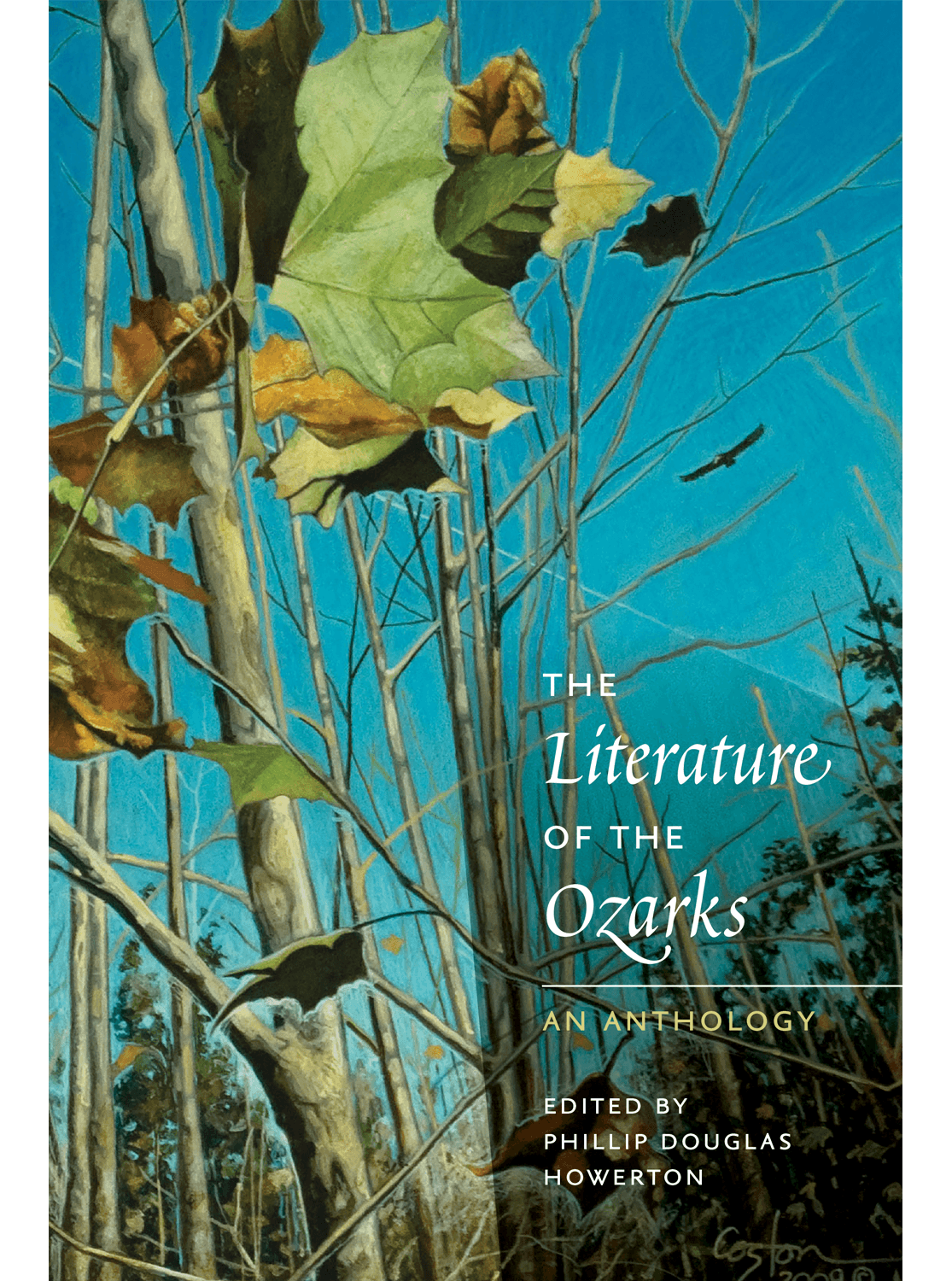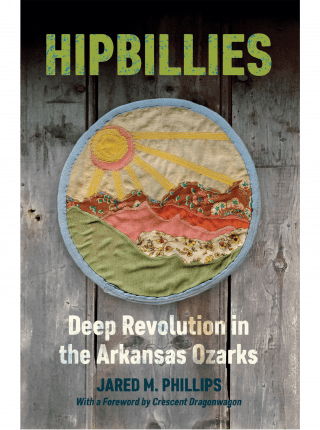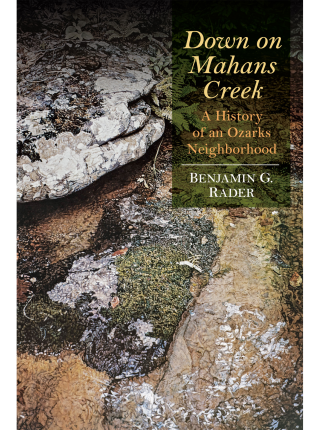The job of regional literature is twofold: to explore and confront the culture from within, and to help define that culture for outsiders. Taken together, the two centuries of Ozarks literature collected in this ambitious anthology do just that. The fiction, nonfiction, poetry, and drama presented in The Literature of the Ozarks complicate assumptions about backwoods ignorance, debunk the pastoral myth, expand on the meaning of wilderness, and position the Ozarks as a crossroads of human experience with meaningful ties to national literary movements.
Among the authors presented here are an Osage priest, an early explorer from New York, a native-born farm wife, African American writers who protested attacks on their communities, a Pulitzer Prize–winning poet, and an art history professor who created a fictional town and a postmodern parody of the region’s stereotypes.
The Literature of the Ozarks establishes a canon as nuanced and varied as the region’s writers themselves.
Phillip Douglas Howerton is a sixth-generation Ozarker and professor of English at Missouri State University–West Plains. He is co-editor of Cave Region Review, general editor of Elder Mountain: A Journal of Ozarks Studies, and the author of a poetry collection, The History of Tree Roots.
Preserving the Ozarks: Dr. Phillip Howerton (Ozarks Alive)
“The writings present individuals ranging from good, honest, self-reliant folk to rough, rowdy, scurrilous pioneer types to the poor and wretched. Ozarks studies owes much to the more mature academic field of Appalachian studies. Howerton makes several allusions to Appalachia, and much of what he writes about the Ozarks has been said of the longer-settled mountains in the eastern part of the US. Most of the Ozarks authors included in this anthology are little known, but there are exceptions—among them Donald Harington, MacKinlay Kantor, and Robert Heinlein. Overall, an excellent collection; unfortunately, no index. Summing Up: Highly recommended. Lower-division undergraduates through faculty;
general readers.”
—F. J. Hay, Choice Reviews, August 2019
“Howerton has done yeoman’s work here. You can read through the anthology slowly, savoring every entry, and when you’re done, you’ll have a thorough understanding of who Vance Randolph and Harold Bell Wright were, and who is valiantly carrying on their work. The Literature of the Ozarks would seem to be a logical text for any course on Ozarks literature or history, and it belongs in every library.”
—John Mort, Down Along the Piney
“The Literature of the Ozarks is an inspired collection that manages to be both broad and deep in its scope. The anthology moves in chronological and thematic order and offers a range of known and not-so-well-known writers. From the backwoods rambles of Henry Rowe Schoolcraft to the contemporary world of Daniel Woodrell, readers will be absorbed in the history of the Ozark Mountains and captivated by the voices and visions of the writers collected here.”
—Brian Hardman, University of the Ozarks
Acknowledgments
Introduction
Part One
Beginnings to 1865 | The Emergence of a Region
Introduction | Beginnings to 1865
1 | Hlu-ah-wah-tah
“Finding of the Four Colors,” translated by Francis La Flesche
2 | Henry Rowe Schoolcraft (1821)
from Journal of a Tour into the Interior of Missouri and Arkansas, 1818–1819
3 | Alphonso Wetmore (1837)
“The Dead Husband”
4 | Charles Fenton Mercer Noland (1839)
“Pete Whetstone’s Last Frolic”
5 | Friedrich Gerstäcker (circa 1840)
“In the Backwoods”
6 | George William Featherstonhaugh (1844)
from Excursion through the Slave States
Part Two
1865–1918 | The Social Construction of a Regional Culture
Introduction | 1865–1918
1 | John Rollins Ridge (1868)
“The Arkansas Root Doctor”
2 | Albert Pike (1872)
“Sunset in Arkansas”
3 | John Monteith (1884)
from Parson Brooks: A Plum Powerful Hard Shell
4 | Minna Caroline Smith (1887)
“A Camp in the Mountains of Arkansas”
5 | Rose Emmet Young (1903)
from Sally of Missouri
6 | Benjamin F. Adams (1906)
“What the Negro Must Do”
7 | Harold Bell Wright (1907)
from The Shepherd of the Hills
Part Three
1918–1945 | The Promotion of a Regional Image
Introduction | 1918–1945
1 | A. M. Haswell (1920)
from A Daughter of the Ozarks
2 | Murray Sheehan (1927)
from Half-Gods
3 | George Pool Ballard (1928)
“Invitation”
“A Broken Promise”
4 | Ralph Alan McCanse (1931)
from The Road to Hollister: A Hill Country Pastoral
5 | Thames Williamson (1933)
from The Woods Colt
6 | Vance Randolph (1933)
“The Chore Boy”
7 | Mary Elizabeth Mahnkey (1934)
“The Hired Man’s Fiddle”
“What Is Grandpa Carrying?”
8 | MacKinlay Kantor (1935)
from The Voice of Bugle Ann
9 | Weldon Stone (1937)
from Devil Take a Whittler
10 | Rosa Zagnoni Marinoni (1938)
“Drought”
“Shanty in the Ozarks”
11 | Dennis Murphy (1941)
“Sonnet 1”
“Sonnet 2”
12 | John Gould Fletcher (1941)
“Thunderstorm in the Ozarks”
“Hillbilly Philosophy”
13 | Irene Carlisle (1945)
“Sonnets to Strength”
Part Four
1945–Current | The Deconstruction of a Regional Image
Introduction | 1945–Current
1 | Constance Wagner (1950)
from Sycamore
2 | Robert A. Heinlein (1953)
from Starman Jones
3 | Wilson Rawls (1961)
from Where the Red Fern Grows
4 | Edsel Ford (1961, 1968)
“Return to Sunday Creek”
“Country Store”
5 | Charles Morrow Wilson (1969)
“More Light”
6 | Frank Stanford (1974)
“Linger”
“Place on a Grave”
7 | Miller Williams (1983)
“Main Street”
“The Story”
8 | Donald Harington (1988)
“Finding the Place, Naming the Place”
9 | Katie Estill (2007)
from Dahlia’s Gone
10 | Michael Mahoney (2008)
from Breathe Deep, Brother
11 | Steve Wiegenstein (2012)
from Slant of Light
12 | Steve Yates (2013)
“Starfall”
13 | Daniel Woodrell (2013)
from The Maid’s Version
14 | Christopher Crabtree
“For a Better Life”
“Romance”
15 | C. D. Albin (2016)
“Hard Toward Home”
“Cicero Jack Considers the Cougar’s Return”
Notes

The Ozarks Studies series acknowledges the awakening of a scholarly Ozarks studies movement—one that crosses disciplinary boundaries as it approaches regional study from a variety of vantage points—and positions the University of Arkansas Press as the publisher at the forefront of the movement. As the only university press headquartered within the Ozarks region and as a press with a solid background in the publication of books on the region—Rafferty’s The Ozarks, Land and Life, Morrow’s Shepherd of the Hills Country, Harper’s White Man’s Heaven, Sizemore’s Ozark Vernacular Houses, and many more—the University of Arkansas Press is ideally suited for the first series that will level a scholarly eye on the Ozarks and Ozarkers.
Winner, 2019 Missouri Library Association Literary Award.
The MLA Literary Award recognizes a Missouri writer or an individual who has written an outstanding book on some aspect of Missouri life.

Adopted at: University of Central Arkansas
Course: ENGL 1373 FYS: Humanities: the Art of Healing: Literature and
Health Sciences
Course Description: The FYS in Humanities provides a small-classroom environment for students designed to promote community, develop skills necessary for success, and reinforce the importance of written and oral communication.
Professor: Carl Olds
Term: Fall 2023





